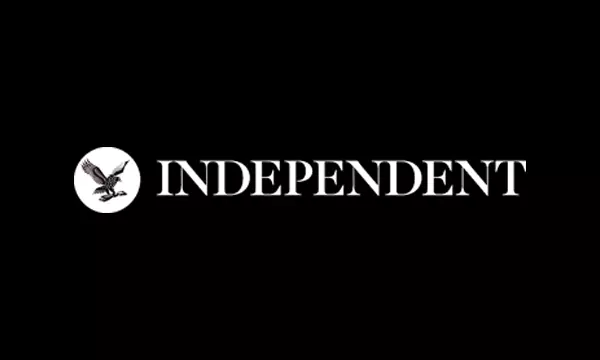
Market mania stemming from the artificial-intelligence boom has boosted technology shares sharply over the past 12 months, with the tech-heavy Nasdaq Composite index climbing 22%.
Much of the gain has come from five behemoth stocks. They are:
- semiconductor maker Nvidia (NVDA) (up 149%),
- Facebook owner Meta Platforms (META) (up 58%),
- retail/tech company Amazon (AMZN) (up 43%),
- Google owner Alphabet (GOOGL) (up 32%), and
- software maker Microsoft (MSFT) (up 26%).
The surge has some experts thinking about early 2000. That’s when tech stocks, especially ones with dot-com in their names, crested after several years of explosive gains and then tanked.

GMO
The Nasdaq Composite soared 86% in 1999 — and crashed 39% a year later.
Right now, stocks are arguably overvalued. As of July 26, the forward price-earnings multiple for the S&P 500 was 20.6, according to FactSet. That’s well above the five-year average of 19.3 and the 10-year average of 17.9. “Forward” means earnings estimates for the next 12 months.
The S&P 500 is also dominated by big tech companies since it’s weighted by market capitalization, and tech stocks have big winners.
TheStreet Pro's Doug Kass assesses stocks
Plenty of experts have turned bearish on stocks. One is renowned investor Doug Kass, author of TheStreet Pro's Daily Diary. Kass's career as a hedge fund manager goes back to the 1970s, including a stint as director of research at the legendary investor Leon Cooperman's Omega Advisors.
Kass disputes the argument that interest-rate cuts by the Federal Reserve will boost the economy and stocks.
“The U.S. economy is far less interest-rate sensitive than previously assumed,” he said.
“It took the Fed undertaking the most rapid rate increase in decades to slowly dull domestic economic growth. It follows that it will likely take a rapid rate decline to stabilize/improve economic growth.”
Related: Warren Buffett's Berkshire sheds stock of major bank
Investors expect the Fed to start trimming rates in September. History suggests this may not be a time to purchase equities, Kass said.
“Buying stocks in October 2007, when the Fed first cut rates, was a poor idea, as it also was when the Fed cut rates in 2000,” he wrote.
Michael Kramer, founder of Mott Capital, headlined a recent commentary, “Stocks Reach 1998 to 2000 Bubble-Like Levels.”
But portfolio managers at GMO, famous for bearish (and often accurate) calls on stocks, don’t see the present market as a 2000 redux. Although, they don’t completely reject the argument.
GMO’s offers stock market outlook
“In terms of technical description, the parallels are accurate,” Ty Cobb, Tom Hancock and Anthony Hene wrote in a commentary. “The narrowness of the market, the elevated cross-sectional volatility, and the concentration of capitalization in a few issues all look similar to the 2000 top.”
But the differences between now and then are substantial, they said. To give some context, GMO finds companies with strong fundamentals by focusing on quality. It also finds attractively valued stocks by avoiding a too-high P-E ratio.
“If we compare today’s markets with the market top in 2000, we see less to fear today on both the fundamentals and the multiples,” the managers said.
Related: Morningstar unveils top-tier, bargain stocks to own
As for fundamentals, GMO’s own quality metric shows that the top 10 companies by market capitalization in 2000 were barely better than the median business. The metric is based on profit levels, profit stability, and balance sheet strength.
“By contrast, today’s top 10 sits squarely in the high-quality camp, with the mid-point just shy of the 10th percentile globally,” the managers said.
“Most of the current crop have stronger barriers to entry, interesting optionality in artificial intelligence and digitalization, and a better record in capital allocation.”
Stocks offer more attractive valuations than in 2000.
Looking at valuations, “In 2000, the P-E ratio of the top 10 was 60,” the managers said. “Market participants were intoxicated by the ongoing communication revolution and heady annual returns of 22% over the preceding five years. The valuation was simply too rich.”
More AI Stocks:
- Analyst adjusts Nvidia stock rating on valuation
- Analyst revises Facebook parent stock price target in AI arms race
- Google falling behind climate goals thanks to AI ramp up
Things are quite different today, the managers said, with a median P-E multiple of 27. “Investors expect less from the megacaps now than they did in 2000. In a real sense, the stakes are lower today.”
While “none of this is intended to be a determinative” argument, … unlike in 2000 when we held a nonmaterial weight in the top 10, we invest with confidence in a number of these companies today,” the GMO managers said.
The investments include Microsoft, Apple (AAPL) , Alphabet, and Meta Platforms META.
The author owns all four of those stocks plus Amazon.
Related: Veteran fund manager sees world of pain coming for stocks







